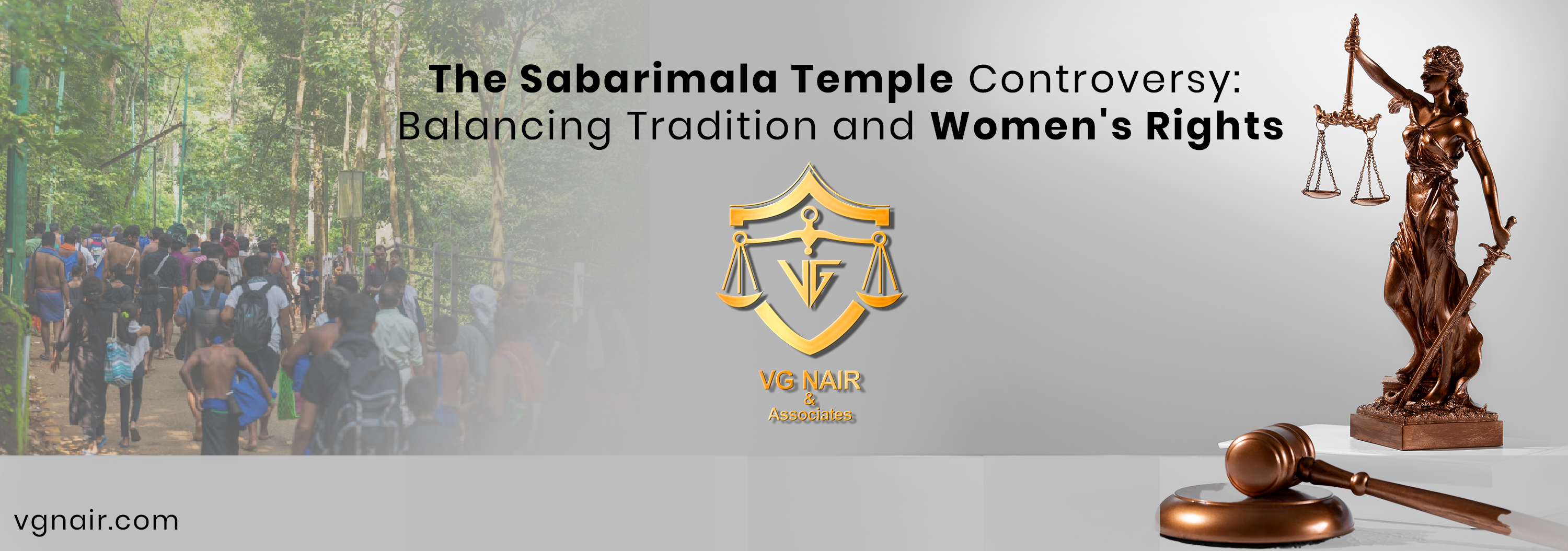The Sabarimala Temple Controversy Balancing Tradition and Womens Rights

The Supreme Court Ruling and Political Pressure
The Indian Supreme Court struck down a long-standing rule that forbade women between the ages of 10 and 50 from visiting the Sabarimala Temple. Protests were organised in reaction to considerable resistance to this ruling from conservative organisations and political parties, which produced great controversy, even though the court had given its orders. The conflict reached a peak in January after two women were allowed admission into the temple, sparking violent protests due to the breaking of the traditional ban.
Arguments and Constitutional Rights
The ban's supporters contend that the limitation is a religious custom related to the nature of the god rather than a case of gender discrimination. However, others argue that discriminating against women because of their menstrual cycle is against their constitutional rights to equality and freedom of religion. Chief Justice Ranjan Gogoi's ruling for the Supreme Court declared the practice unlawful and unconstitutional, placing a strong emphasis on women's rights.
Political and social turbulence
Political parties leveraged the Sabarimala controversy ahead of the 2019 Lok Sabha elections, amplifying tensions. Despite the Supreme Court's verdict, the reopening of the temple for the "mandalam" season on November 16 saw continued unrest. The BJP and right-wing organisations protested the decision, citing religious beliefs, while women's rights groups and left-leaning parties, including the ruling CPI (M), supported it for gender equality reasons. Leaders of the ruling CPI (M) compared those unleashing violence over the Sabarimala verdict to Taliban and Khalistan terrorists. CPI (M) supports the entry of women of all age groups at Sabarimala. Keeping alive the debate on the entry of women of menstruating age into Sabarimala shrine, the CPI (M), heading the ruling LDF, has batted for the entry of women of all age groups into the temple. CPI (M) also filed an affidavit before the Supreme Court supporting the case.
The Role of Tradition and Legends
Sabarimala was formerly off-limits to menstruating women because of stories about Lord Ayyappa's chastity vow and his relationship with Malikapurathamma. Many devotees and right-wing organisations insisted that the prohibition was necessary to safeguard the temple's holiness in spite of the Supreme Court's decision.
Legal battles and protests
Protests sprang out, especially in Kerala, after the Supreme Court's 2018 ruling, which was the subject of many petitions. Citing right-wing parties' meddling in the court's enforcement of its orders, the Kerala government petitioned the Supreme Court to transfer matters pertaining to the temple from the Kerala High Court.
Historical context and judicial decisions
The custom of excluding women from Sabarimala, rooted in traditional beliefs and practices, has a long history that dates back several centuries. The Indian Young Lawyers Association, however, contested this in 2006, and as a result, the Supreme Court ruled in 2018 that women of all ages were permitted entry into the temple. The Travancore Devaswom Board, which is in charge of the temple's management, approved this historic move.
Looking Forward: Legal and Social Implications
Sabarimala poses significant constitutional questions on gender equality and religious freedom in addition to religious practices. According to senior lawyer K Parasaran, caste discrimination falls under the wrongly interpreted Article 17 of the Constitution, and he argues that Article 15 of the Constitution, which prohibits discrimination on grounds of religion, race, caste, sex, or place of birth, only pertains to secular institutions, not religious ones.
Conclusion
The Supreme Court ruled that Rule 3(b) of the Public Worship Rules was unconstitutional, emphasising that denying women access to Sabarimala infringed on their basic rights. This historic decision upheld women's freedom of religion and brought attention to the continuous battle to strike a balance between custom and constitutional rights.
